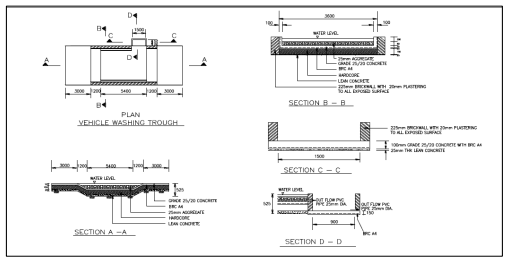12.0 CONTROL OF TRAFFIC AND TRANSPORTATION
Plate 34: Examples of speed limit and safety signs.
2. Strictly obey speed limits and other traffic laws.
3. Stabilise and pave all entrance/exit roads to the site for a suitable distance from where these access roads join existing paved or public roads.
4. Construct a wash bay / wash through with a silt trap of not less than 1m x 1m x 1.2m (depth) in size (based on Drawing design) at the location shown in the approved EIA/AEC. In addition, construct the washing facility with grating / rumble surface and silt trap.
5. Conduct periodic maintenance on the silt trap. Prohibit disposal of sediment removed from the silt trap into drainage or watercourses.
6. Refer to requirements from the Local Authorities for transportation routes and/or JKR for access involving road reserves (application of wayleave).
7. Obtain consent from private landowners if access is required across their land.
8. Clean tyres and undercarriage of transportation vehicles at the wash bay / wash through before leaving the project site to avoid formation of bulky deposited dirt and earth on public road surfaces.
9. Remove sediment or mud tracked out on public roads at the end of the same work day by sweeping, shoveling or hosing.
10. Avoid off-site transportation activities during peak traffic hours as stated in the AEC/MD.





